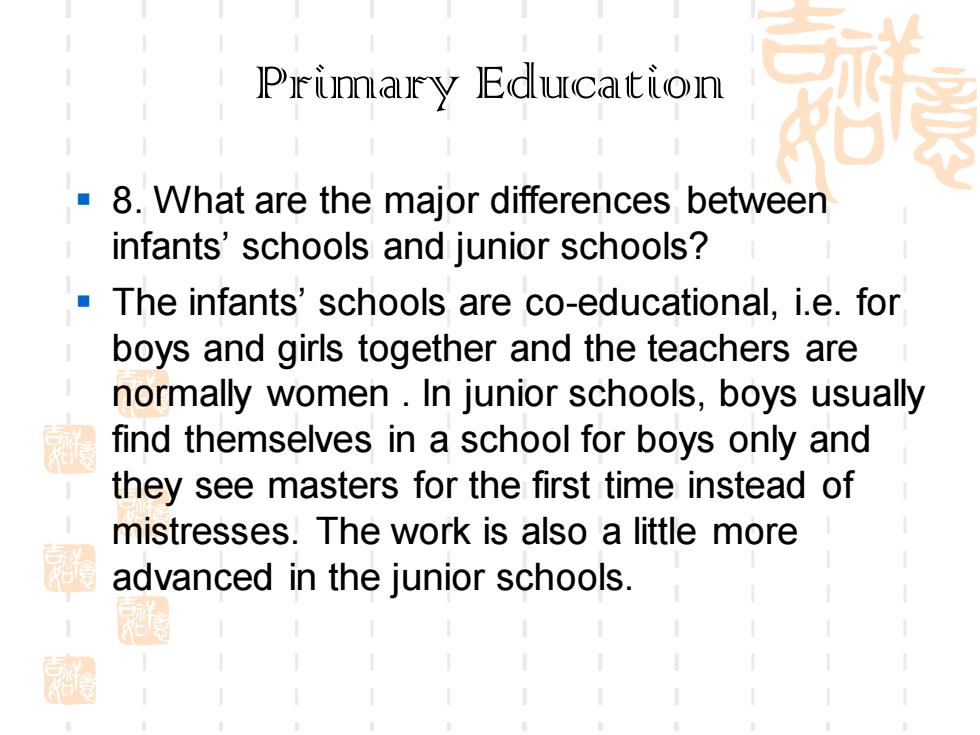
Priunnaury EdluCation8. What are the major differences betweeninfants' schools and junior schools?The infants' schools are co-educational, i.e. forboys and girls together and the teachers arenormally women . In junior schools, boys usuallyfind themselves in a school for boys only andthey see masters for the first time instead of一-1mistresses. The work is also a little more福advanced in the junior schools11111.1111111
Primary Education ▪ 8. What are the major differences between infants’ schools and junior schools? ▪ The infants’ schools are co-educational, i.e. for boys and girls together and the teachers are normally women . In junior schools, boys usually find themselves in a school for boys only and they see masters for the first time instead of mistresses. The work is also a little more advanced in the junior schools
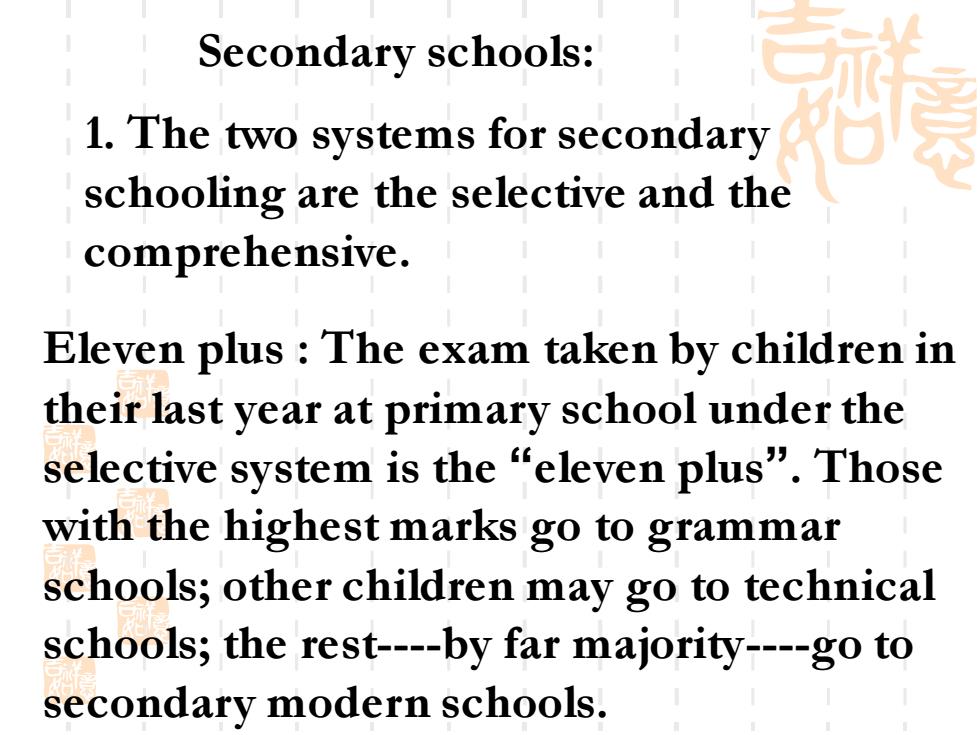
Secondary schools:1. The two systems for secondaryschooling are the selective and thecomprehensive.-11Eleven plus : The exam taken by children intheir last year at primary school under theselective system is the “eleven plus". Thosewith the highest marks go to grammarschools; other children may go to technicalschools; the rest----by far majority----go tosecondary modern schools
Secondary schools: 1. The two systems for secondary schooling are the selective and the comprehensive. Eleven plus : The exam taken by children in their last year at primary school under the selective system is the “eleven plus”. Those with the highest marks go to grammar schools; other children may go to technical schools; the rest-by far majority-go to secondary modern schools
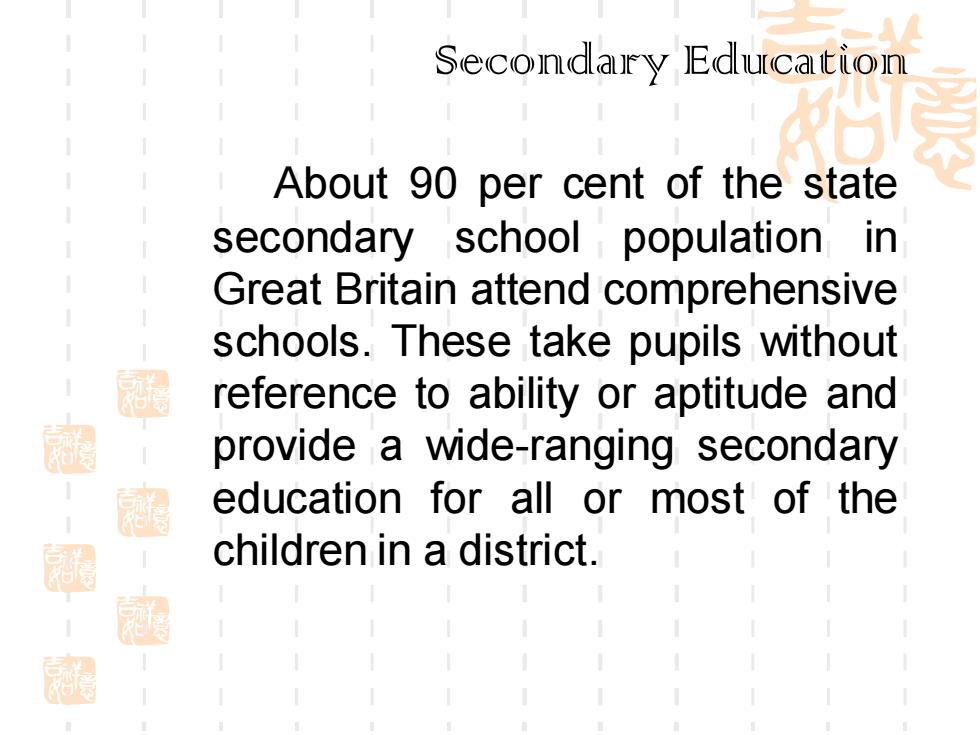
VSecondaury Edurcation11111111About 90 per cent of the state11secondary school population in11Great Britain attend comprehensiveschools. These take pupils withoutreference to ability or aptitude and智票--provide a wide-ranging secondaryeducation for all or most of the-children in a district.1111I111稻11111111111111
About 90 per cent of the state secondary school population in Great Britain attend comprehensive schools. These take pupils without reference to ability or aptitude and provide a wide-ranging secondary education for all or most of the children in a district. Secondary Education
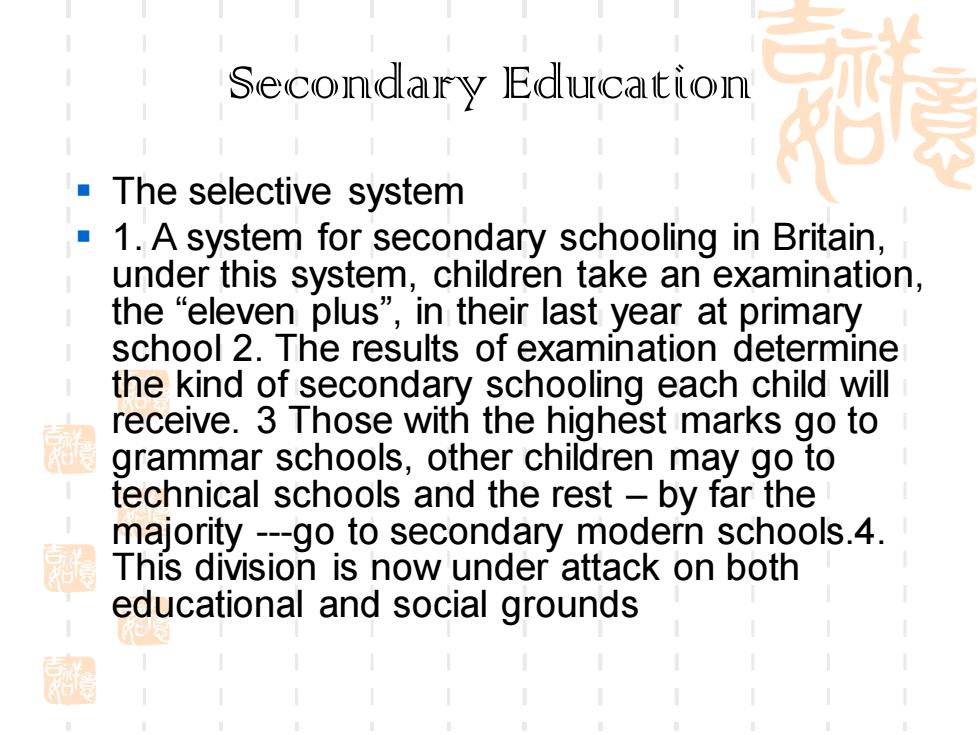
花Secondary Edurcation111111The selective system1. A system for secondary schooling in Britain,under this system, children take an examination.the “eleven plus", in their last year at primaryschool 2. The results of examination determinethe kind of secondary schooling each child willreceive. 3 Those with the highest marks go togrammar schools, other children may go to-technical schools and the rest - by far themajority ---go to secondary modern schools.4This division is now under attack on botheducational and social grounds1RE11111
Secondary Education ▪ The selective system ▪ 1. A system for secondary schooling in Britain, under this system, children take an examination, the “eleven plus”, in their last year at primary school 2. The results of examination determine the kind of secondary schooling each child will receive. 3 Those with the highest marks go to grammar schools, other children may go to technical schools and the rest – by far the majority -go to secondary modern schools.4. This division is now under attack on both educational and social grounds
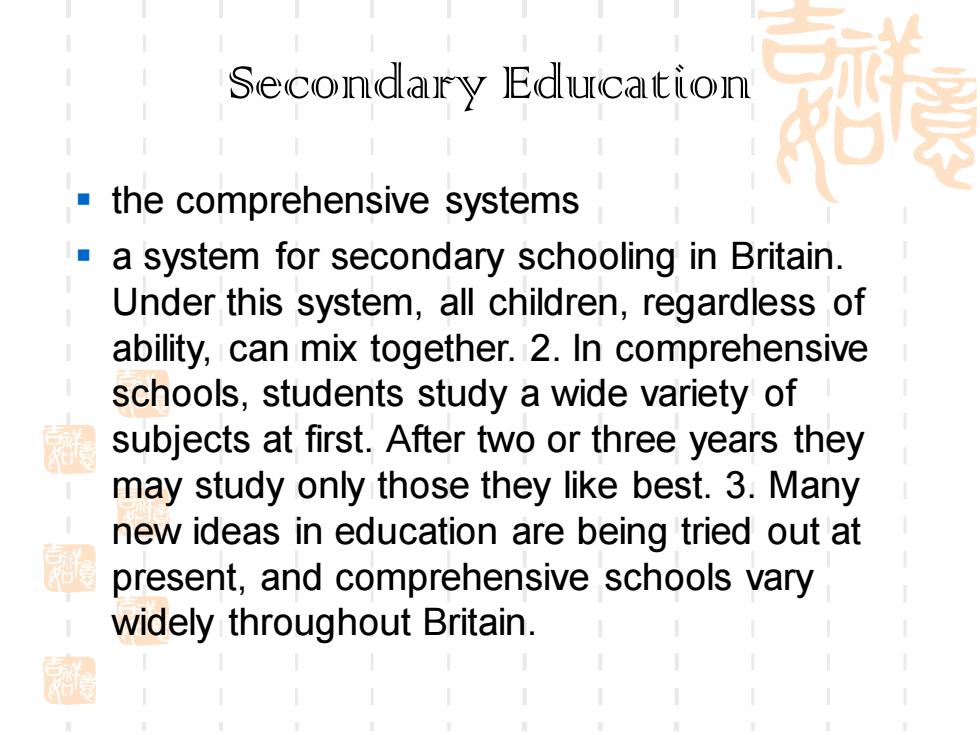
11Secondaury Edurca tion11111the comprehensive systems1a system for secondary schooling in Britain.Under this system, all children, regardless ofability, can mix together.2. In comprehensiveischools, students study a wide variety ofsubjects at first. After two or three years theymay study only those they like best. 3. Manynew ideas in education are being tried out atpresent, and comprehensive schools varyEWidely throughout Britain.11111111111-
Secondary Education ▪ the comprehensive systems ▪ a system for secondary schooling in Britain. Under this system, all children, regardless of ability, can mix together. 2. In comprehensive schools, students study a wide variety of subjects at first. After two or three years they may study only those they like best. 3. Many new ideas in education are being tried out at present, and comprehensive schools vary widely throughout Britain